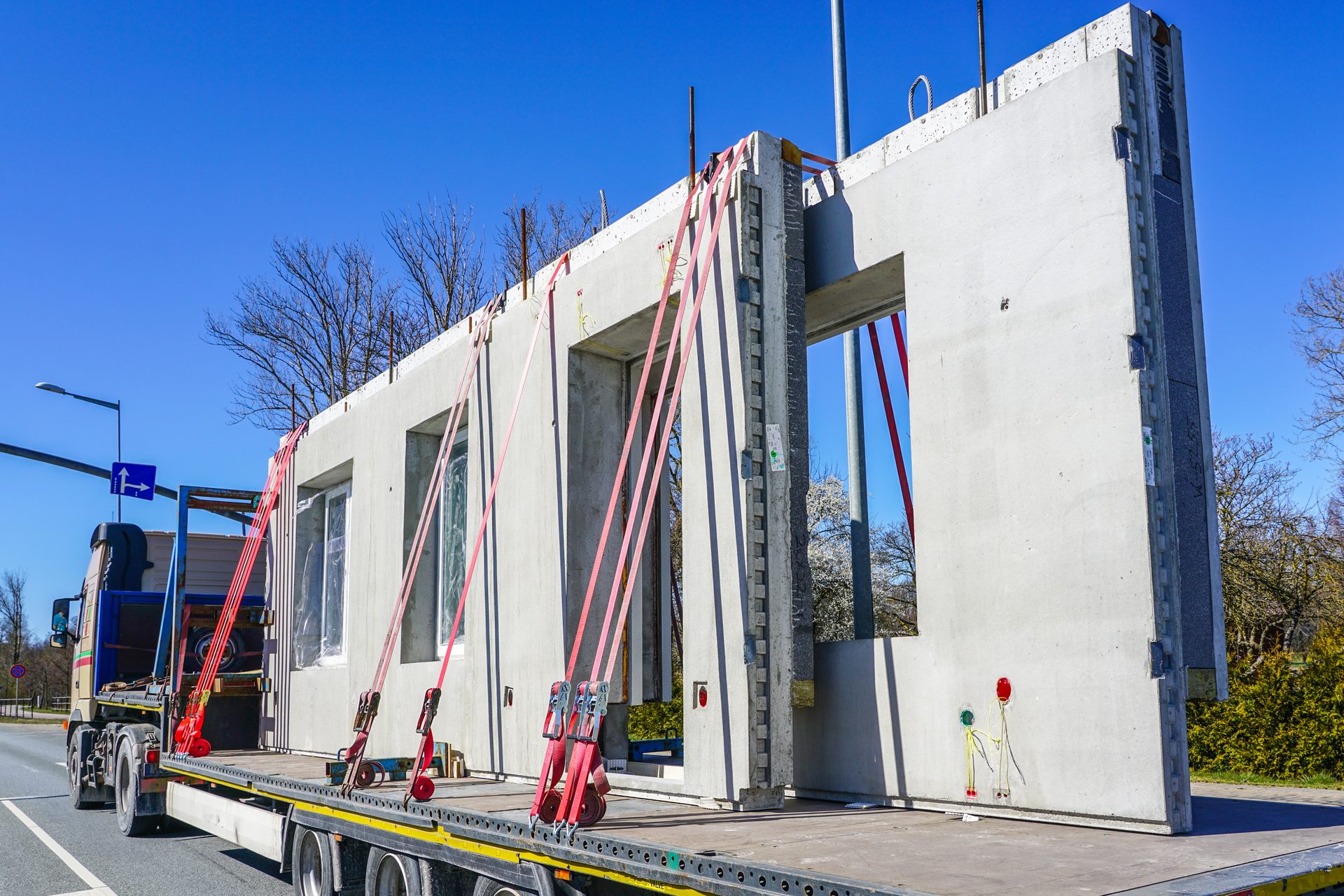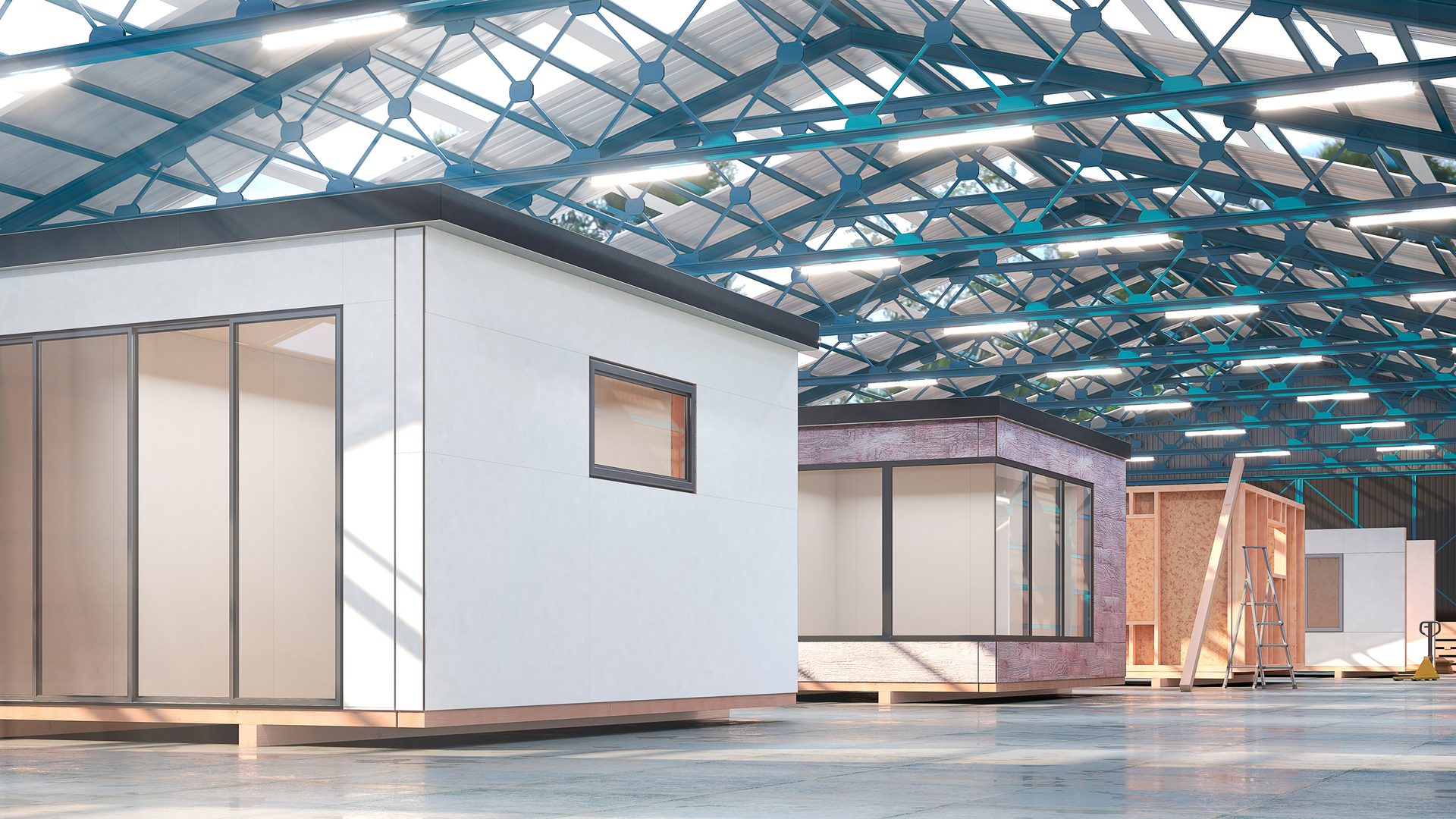Susan
Hines
Drywall Finishing Consideration in Modular Building
Builders appreciate the advantages of modular construction, including time savings, cost reductions, and lower waste generation.
Michael Schmeida, MSc, LEED AP
ALL THINGS GYPSUM
Modular building concepts—also known as off-site construction—have been utilized for decades. However, the use of pre-fabrication and modular building techniques is increasingly common now. According to a 2020 Dodge Data Analytics SmartMarket Report, modular building is growing fastest in the healthcare, hospitality, multi-family and higher education sectors. The Modular Building Institute reports that the market share of pre-fab and off-site construction has doubled in recent years and they predict it will double again over the next five years.
Building owners and property managers appreciate the advantages of modular construction including time savings, cost reductions, and lower waste generation (MBI claims that homes built with a modular process use about 17 percent less material overall.) Increased jobsite safety is also a benefit of modular construction. The quality controls present in manufacturing mean tighter tolerances in comparison to on-site construction. Clearly, building a wall on a flat surface—rather than in situ—has pluses.
When it comes to gypsum panel systems, modular building does not eliminate every problem encountered in a traditional build out. The Gypsum Association has numerous technical publications aimed at both avoiding potential headaches in the field and making repairs when issues do arise. Pre-fab construction can use these same strategies. The most common complications associated with walls in modular building are cracking and fastener popping in finished systems. Let us discuss cracking first.
Cracking typically appears at joints, e.g. centerline cracks or cracks at the ceiling to wall interface. Before we get into some of the specific reasons cracking occurs, and means of mitigating cracking, it is important to bear in mind that finished joints are extremely susceptible to movement. Care should be taken to avoid excessive movement—whatever the source.



In any type of construction, several factors can result in movement. When it comes to modular construction two forms of movement are more common. The first is swelling and shrinkage of wood framing members due to changes in moisture from environmental variation (which is shared with conventional construction). Another source of movement in modular construction is racking caused by maneuvering finished wall assemblies around the factory during construction. Finally, transporting systems to the jobsite and offloading for them for installation can also cause movement.
While modular construction provides exceptional control during physical construction, assemblies still can be subjected to changing conditions during the period from completion to installation. Environmental conditions can vary widely between the factory, the storage area, and the final site. Swelling or shrinking lumber prompted by changes in temperature and humidity can result in movement and thus, cracking. To cite a specific instance, a manufacturer creating wall assemblies in the heat and humidity of an Indiana July subsequently stored the wall assemblies in an unconditioned barn. During the cold and dry winter months, these specimens were exposed to extremely different conditions. As a result, cracking occurred at many of the joints prior to transportation to the installation site.
Modular assemblies are also moved around several times before final placement. First, they are lifted off the assembly table. Next, they can be either stored or assembled into a building. Finally, the building component or assembly is trucked to the job site and moved around into final position. This movement can cause torqueing of the assembly—yet another source of cracking. Care should be taken when handling, storing, and transporting modular construction units.
Like cracking, fastener pops are often a problem with modular assemblies. These have similar causes and again environmental factors play a key role. As previously noted, lumber shrinkage is a source of cracking as well as the gapping that causes fastener loosening. In our Indiana example, fastener pops were an additional problem. Framing can twist and bend in response to environmental conditions causing fasteners to loosen and fastener popping is a typical result.
Finally, and again, another problem that can also occur during conventional construction, is adhesive shrinkage. I have found that the “screw and glue” method of panel attachment is more common in modular construction than traditional construction. However, many adhesives are water-based and can shrink significantly as they cure, causing gapping and subsequent fastener popping.
So, now that we have identified causes of both cracking and fastener popping in modular construction, what can be done to minimize these issues?
The obvious answer, though not always practical or desirable, is to finish the joints after the wall assembly or building is in its final position. This approach especially applies where cracking is concerned. Once the building is assembled and conditioned, environmental variability is meaningfully reduced. Additionally, racking the assembly and stressing the joints through physical movement is also avoided.
The use of solvent-based adhesives can help with reducing fastener pops in both conventional and modular “screw and glue” applications. If this is not possible due to VOC regulations or concerns about solvent release, make sure the water-based adhesive used is completely cured (this holds true for any adhesive for that matter). Cure times can vary widely based upon the specific adhesive and environmental conditions. Read the manufacturer’s instruction and proceed accordingly. This may delay the assembly process, but will help with reducing rework in repairing popped fasteners.
Maintaining consistent environmental conditions for the assembly or building is also key. The closest to habitable conditions the better. Conditioning warehouses and storage barns can be expensive, but this cost may be offset by not having to rework the assemblies. If the manufacturer is not the installer, consider the reputational risks associated with delivering problematic systems or components.
While not always feasible, minimizing movement will help. At the very least, taking care not to twist the assemblies will help avoid racking and the subsequent fastener popping and cracking that can occur.
One final tip is to use ridged channels if allowable (fire-rated assemblies may or may not have them as an option). Using channels provides a less rigid attachment of panels to framing and allows more independent movement. Of course, rigid channels may also have the added benefit of enhancing acoustical performance—an increasing concern in design and construction today. For guidance on the use of these channels in fire-rated assemblies, refer to information on specific designs in the GA-600 Fire Resistance and Sound Control Design Manual. A revised edition of the manual was released late last year.
The advice above is limited to guidance most pertinent to modular and pre-fab construction. Many more tips on preventing cracking and fastener popping as well as repairing these problems should they occur are in the following Gypsum Association publications:
- GA-221 Causes, Prevention, and Repair of Joint Ridging and Centerline Cracking
- GA-222 Repairing Screw or Nail Pops
- GA-227 Recommendations for the Prevention of Ceiling Cracking
These documents are available as free downloads from the Gypsum Association bookstore at gypsum.org. In the bookstore, readers will find numerous publications and additional resources on issues and solutions related to gypsum panel systems for walls, roof-ceiling, floor-ceiling and other assemblies. In addition, FAQs, in both print and digital formats, and video tutorials addressing technical topics are available in the technical resources and education sections of the gypsum.org. Having trouble finding an answer to your question? Submit a Technical Assistance Form through gypsum.org. Remember, the Gypsum Association is your technical center for gypsum panel products.
Images Credit: Gypsum Association
The Gypsum Association’s Director of Codes, Standards and Research is Michael Schmeida, MSc, LEED AP. His responsibilities include overseeing and coordinating technical publications, standards and testing efforts for the GA. Active within numerous ASTM committees, he is also a member of ASHRAE SSPC 189.1. He holds both a MS and BS in Chemistry from The University of Akron. He can be reached at mschmeida@gypsum.org.
